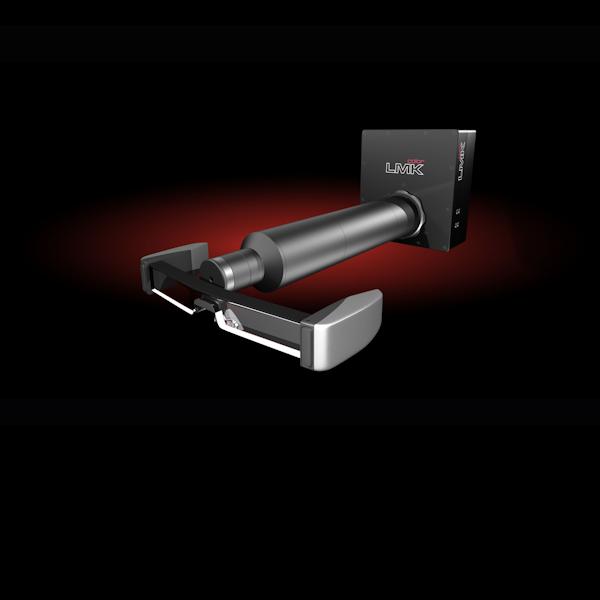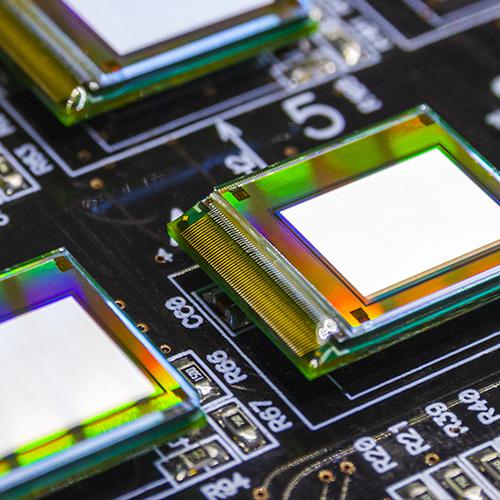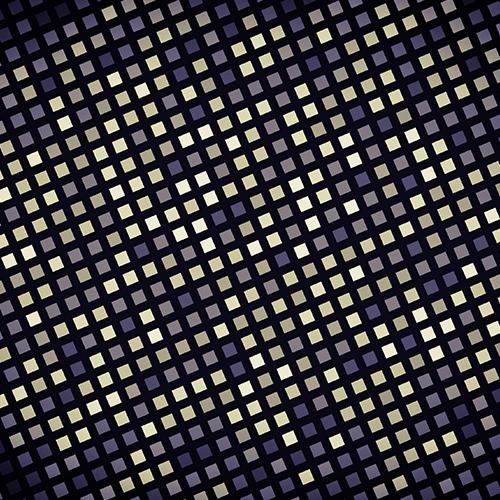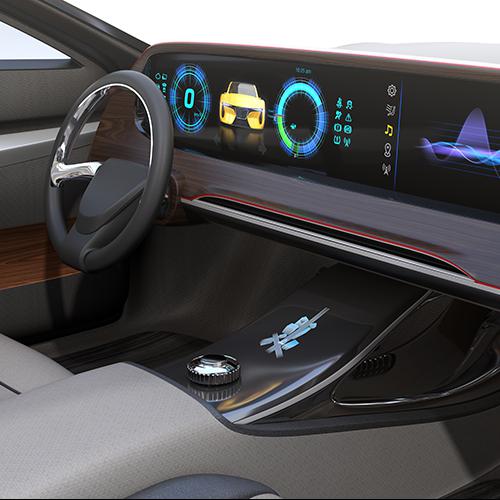A slanted line with a with of one display pixel is used to evaluate the resolution
LMK Display Resolution – Reproducible resolution measurement of displays

Two methods, one goal: precise analysis of display resolution
The LMK Display Resolution software is part of the display package and enables the effective image resolution of a display to be evaluated in comparison with the input signal. It is used to characterize the “loss of image sharpness” or the perceived resolution. The package includes two powerful methods based on luminance measurements with high optical magnification lenses: Pixel Crosstalk and Slanted Line MTF. We recommend both algorithms for different applications.
COMPARISON OF BOTH METHODS
Learn more about measurement conditions and the advantages and disadvantages of each method in our technical article (external link) or contact us here.
Slanted Line MTF
Slanted Line MTF is an IEC-62977-3-6 standardized and fast way to measure the resolution capability of a display. The fundamentals of the evaluation algorithms are based on the publication "Line-Based Modulation Transfer Function Measurement of Pixelated Displays," by Kenichiro Masaoka and base on the well-established ISO12233 slanted edge evaluation, which is used to characterize the MTF (Modulation Transfer Function) of optical elements.
Features
- Standardized according to IEC 62977-3-6
- Calibration takes lens MTF into account
- Suitable for flat-panel displays
- Sampling condition: We recommend more than 10 camera pixels per display pixel
- Only suitable for virtual images to a limited extent
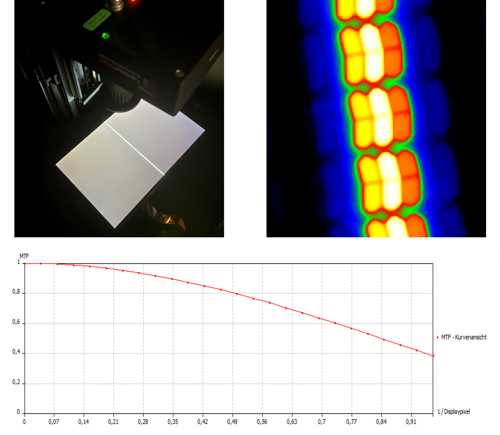
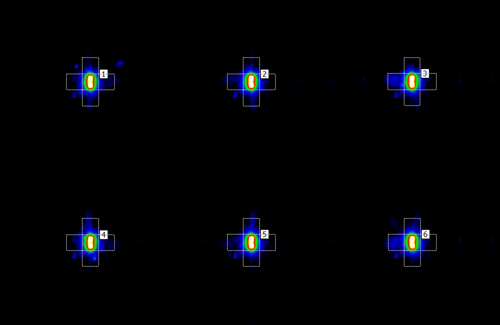
Single display pixels are used to evaluate the resolution
Pixel Crosstalk
Pixel Crosstalk evaluates resolution by analyzing the scattering profile of individual display pixels. A crosstalk is calculated as a percentage in the vertical and horizontal directions and across the entire field of view. It is based on the publication "Pixel Crosstalk: A New Metric to Characterize DOI Loss Due to AG Treatments of Display Glasses".
Features
- Ideal for virtual images such as HUDs and AR/VR
- Requires at least 30 camera pixels per display pixel
- Not suitable for irregular subpixel layouts
Lens selection for resolution measurements
Different lenses are used depending on the display type:
- Standard displays: (z. B. Smartphones, Laptops, Monitors): Macro lenses with a magnification of 0,5–2×
- Micro-displays: Microscopic lenses with a magnification of 5–20×
- Near-Eye-Displays (NED): Specially designed AR/VR NED-lenses with a narrow field of view
RELEVANT PRODUCTS AND APPLICATIONS
Downloads
Publications
International Conference on Display Technology (ICDT 2024)
International Display Workshop (IDW 2023)
Society for Information Display 2023
Eurodisplay (2022)
SID International Symposium 2016
SID International Symposium 2016
- Type:
- Add-On
- Applications:
- Automotive Display
- Measurands:
- Light measurement
- Tasks:
- Development & Industry

